The Fire Carts of Xishi
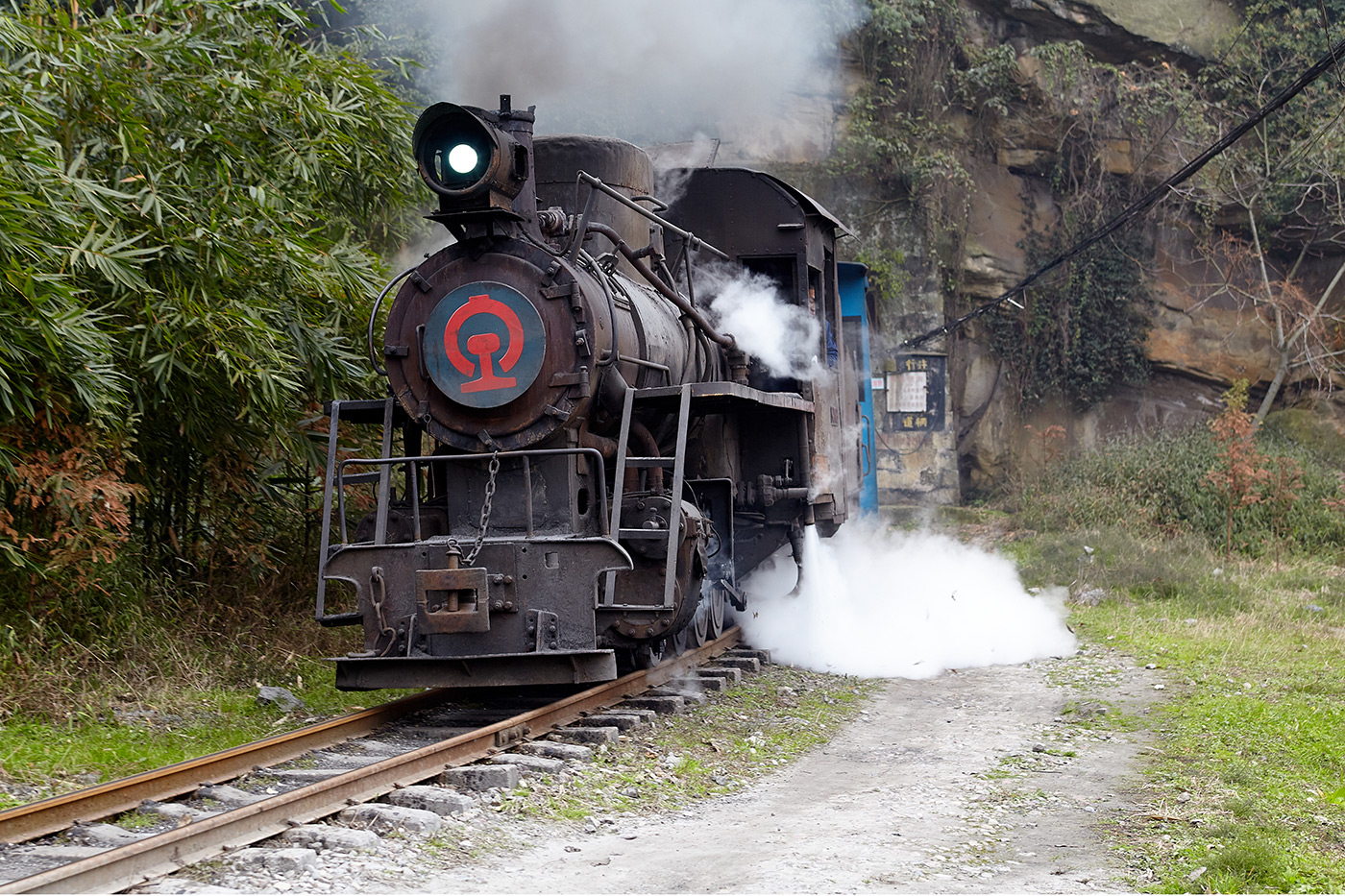
The Fire Carts of Xishi
The Chinese word for train is huo che (火车). Translated literally, it gives you wonderfully descriptive Fire Cart
A shrill whistle splits the morning calm and echoes off the two enormous sandstone cliffs that shelter the little town of Bagou. A few moments later, in a cloud of smoke and steam, a train bursts out of a tunnel in one of the cliffs and rumbles to a halt in the station. A handful of people alight and the train chuffs off to its destination a further kilometer-and-a-half up the line. Ten minutes later it trundles back in the other direction. The last remaining people on the platform climb aboard the shabby green carriages and, with another blast of the whistle, the train disappears into the tunnel again. Thus ends the morning rush hour.
The town’s official name is Bajiaogou, which means plantain valley, but most people use the shorter variation. It is a sleepy red-brick town that is set in a pretty valley at the heart of the Jiayang National Mining Park in Sichuan province, about 200 kilometres south of Chengdu.
Bagou was built by the Jiayang Mining Group, a company formed as a Sino-British joint venture in 1938 to tap the rich seam of coal that ran under the mountains. The mines closed in 1988 and as the last coal train left so did most of the population, leaving behind a town frozen in time.
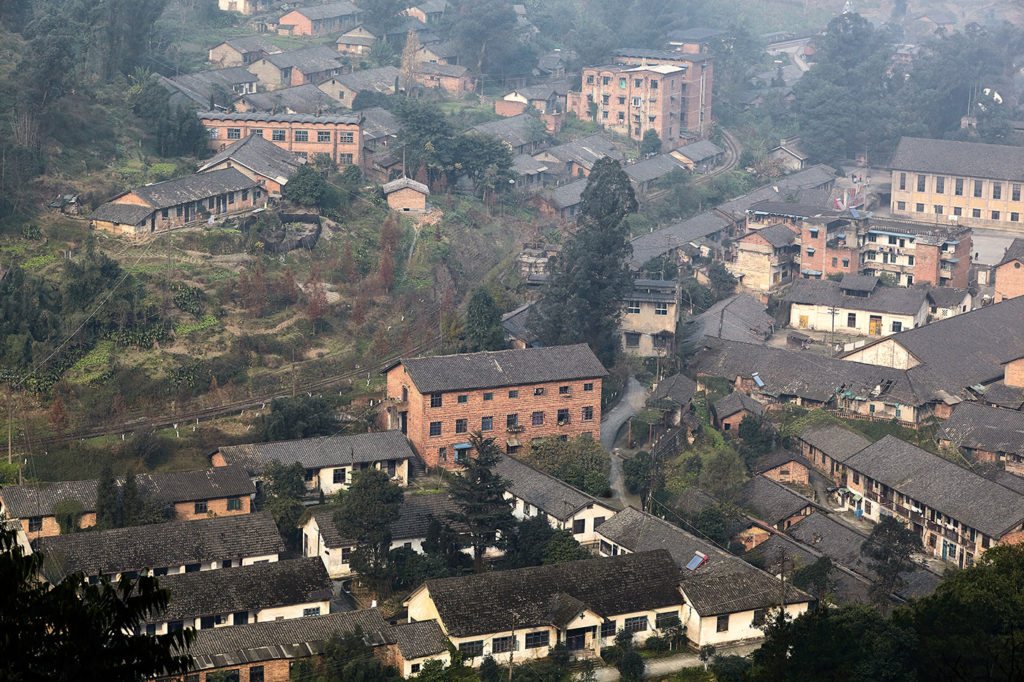
The red brick mining town of Bagou.
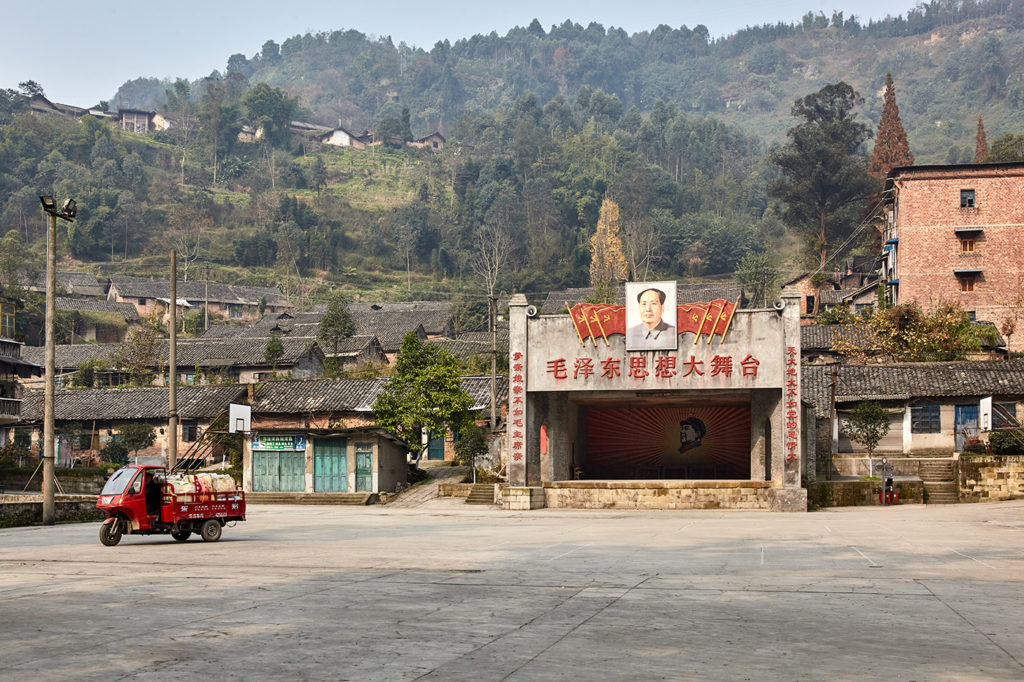
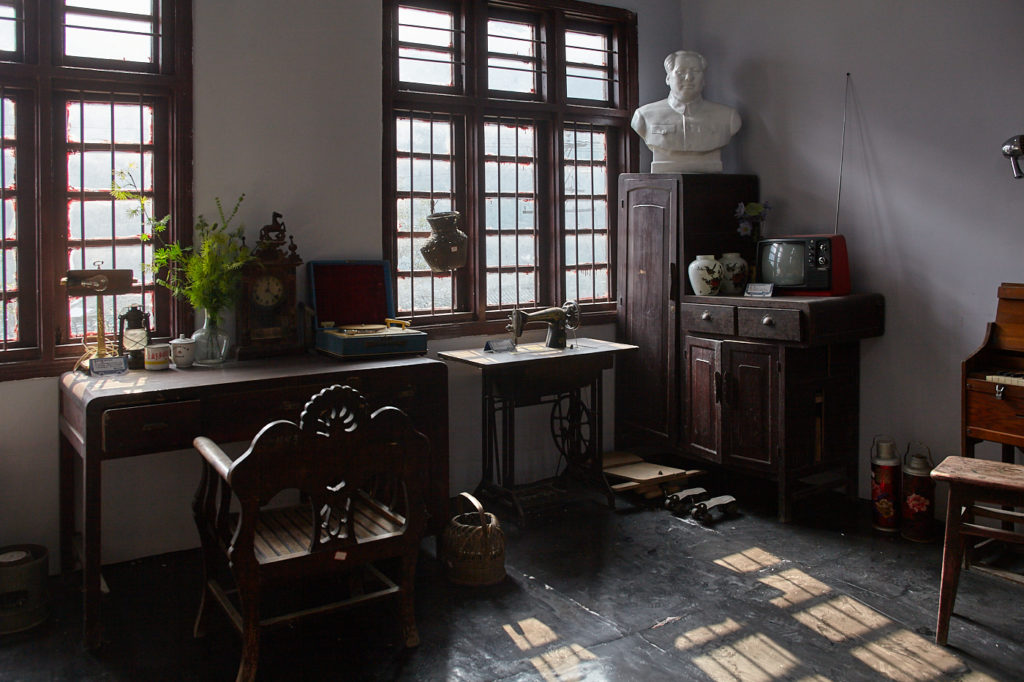
Bagou town square with restored stage (left). Display in the Bagou Mining and Geological Museum shows the interior of a typical miners cottage (right).
A huge auditorium originally built for the workers occupies the centre of town, with old lathes, drills and other bits of industrial hardware scattered around, rusting. Facing this is the Soviet style administrative building, which now houses a geological and mining museum.
Between the two is an open area known as Happy Wood where, on fine afternoons, you’ll find residents playing cards and chatting beneath handsome dawn redwoods.
Read also:Walking the line
To the far side of the auditorium is the town square. On the right, just below the railway, is a restored stage with a picture of Chairman Mao at the back. This is presumably where the notorious “struggle sessions” once took place. These days the only struggles are the nightly aerobics classes in the square that help keep the mostly retired residents of the town fit.
On the left, opposite the stage, a little lane leads down a flight of steps to Zhongfu Street. This is one of the oldest thoroughfares in town. It was once a street of opium dens, brothels and casinos. These days it still thrives each morning as a market where local farmers sell their produce. But many of the other buildings around town, from humble miners’ cottages to schools and hospitals, are empty now and are falling into disrepair.
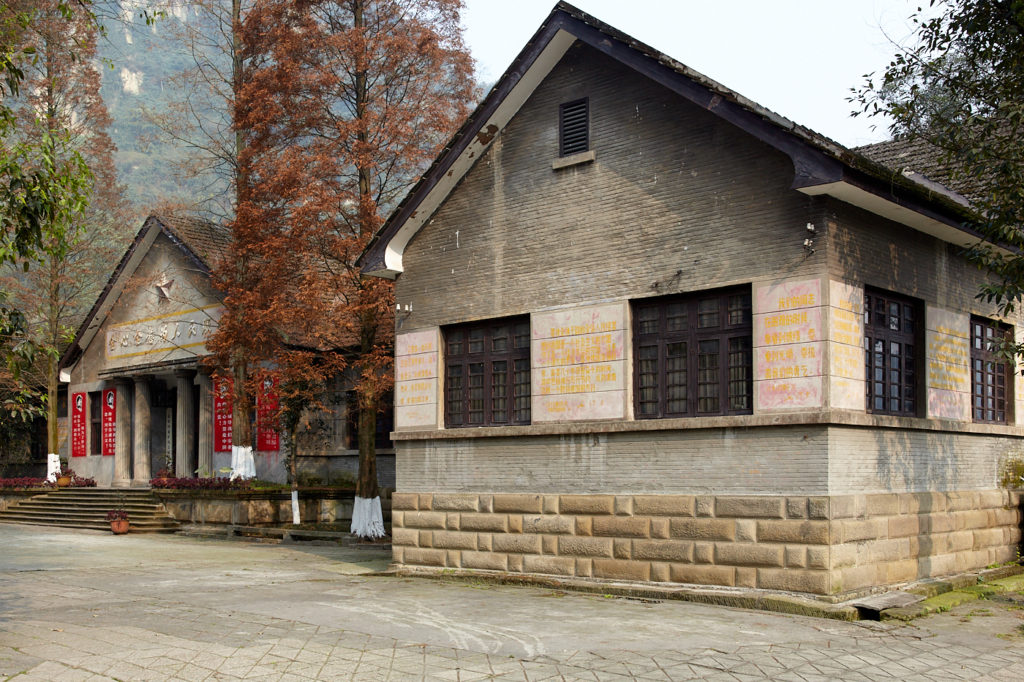
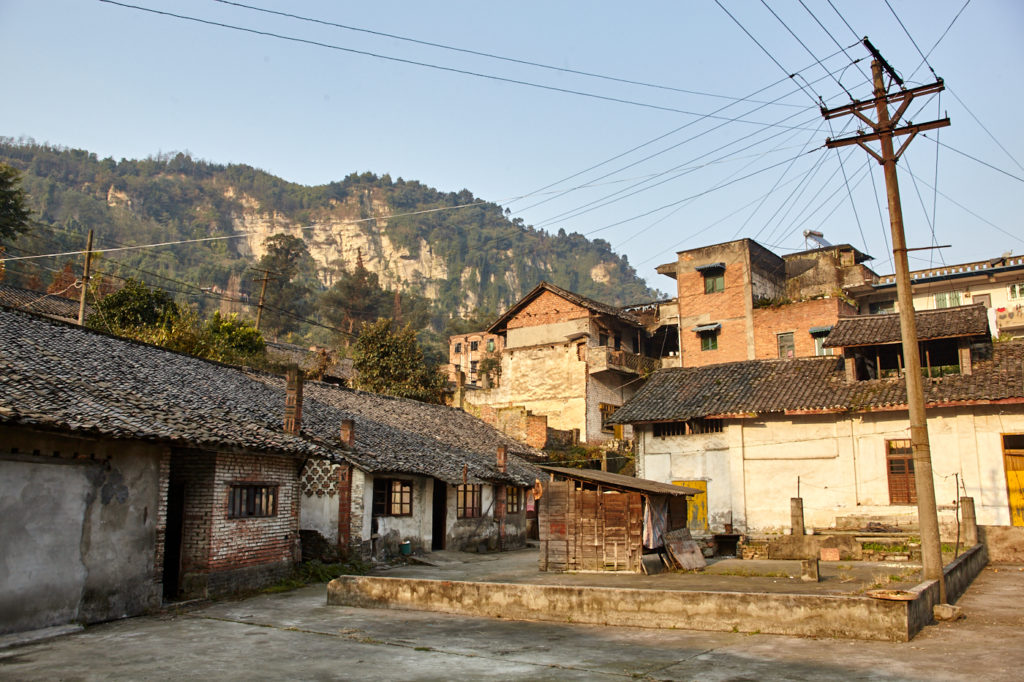
The Soviet style administrative building is now the Geological and Mining Museum (left). Some of the buildings are beyond repair but others could well be restored (right).
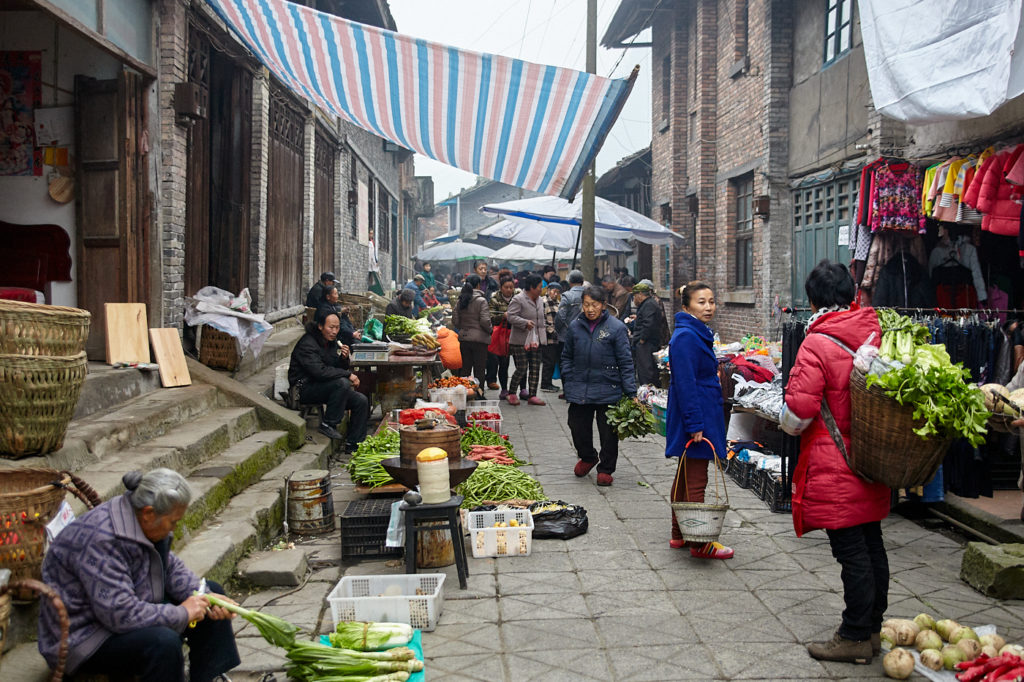
Early morning on bustling Zhongfu Street.
Following Zhongfu Street, keeping the little river to the left, you will pass some 1950s Soviet-style houses. Beyond these and through a grove of banana trees the way leads to the head of the No 1 pit at Huangcun, and the end of the railway line. The former lamphouse next to the old mineshaft has been preserved and is now a museum, though opening times are sporadic. A wander around the buildings near the station will reveal portraits of Mao and Leninist slogans.
Lifeblood of the town
If Bagou is the heart of Jiayang National Mining Park, then the train is its lifeblood. For over fifty years it was the town’s only connection with the outside world. Until 2012 there wasn’t even a road and the one that exists now is little more than a narrow strip of concrete used mainly by trucks either carrying bamboo or serving the quarries.
The railway was built in 1958, a 762mm (2ft 6ft) narrow gauge line to carry coal from the mines at Huangcun and Jioaba to the river at Xishi. It also served for transporting both coal miners and regular passengers. There are six locomotives still working. All are Type ZM 16-4 with an 0-8-0 wheel arrangement. They were built by the Shijiazhuang Motive Power Machinery works in Hebei during the late 1950s and early 1960s.
When the mines closed there were plans to scrap the railway but a public outcry saved the line. In 2007 the provincial government named it a key historical and heritage site and in 2010 the railway and the area it passes through were officially named Jiayang National Mining Park.

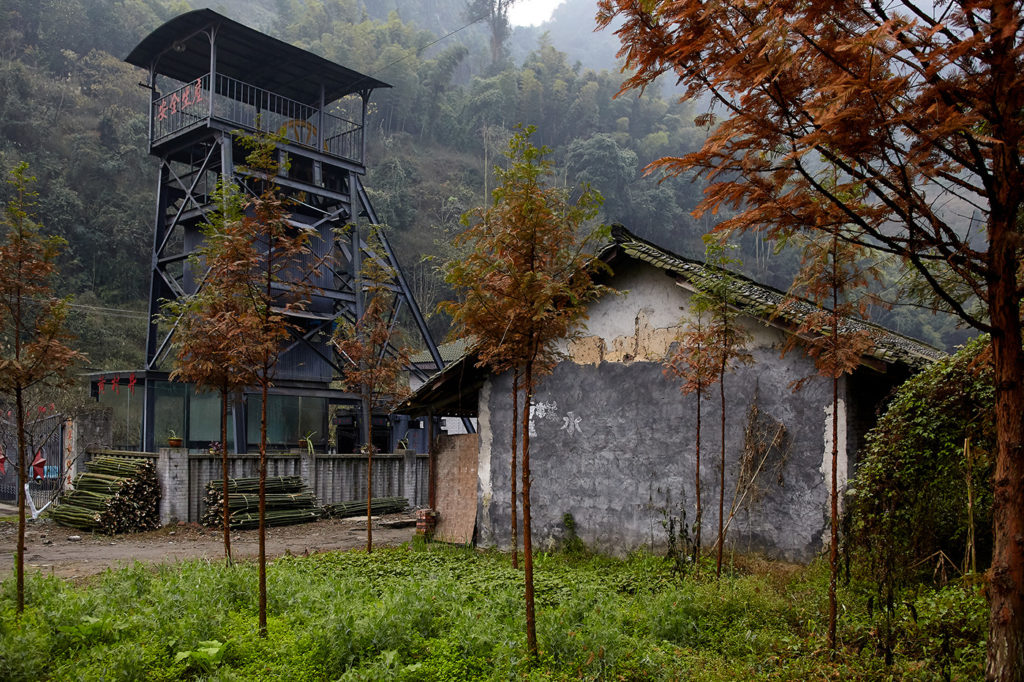
Slogans painted on the buildings at Huangcun station (left). The Number 1 pit head at Huangcun (right).
The railway itself starts at Xishi with the distance to Huangcun being just shy of twenty kilometres. The first five kilometres are electrified and are, since the No 3 pit at Yuejin is still operational, still used to transport coal. Yuejin is the first stop on the line and the official entrance to the park area. From here the train climbs the side of the valley, past terraced fields and bamboo groves, towards Mifengyan. Here there is a small railway exhibition with a few locomotives and some panels giving a brief history of steam.
From here the train passes through some very picturesque scenery. Places with names such as Heshanwan and Laoyingzui, or, in English, Monk’s Bay and Old Eagle’s Beak. As it approaches Caiziba the train navigates an impressive C-shaped curve some 70 metres in radius. Beyond Caiziba the train climbs to Xianrenjiao, which at 602 metres is the highest point on the line.
The last stop before Bagou is Jiaoba, which was the site of the No 2 pit. Like Bagou this is a small red-brick town that is populated these days almost entirely by retirees chatting in shady corners, playing cards or looking after their grandchildren. Here too are many abandoned or only partially occupied buildings, some of which are set in pleasant gardens overlooking the railway.
Between Jiaoba and Bagou are the two longest tunnels on the line, both at 224 metres in length with less than 100 metres separating them. The second tunnel leads directly to Bagou station.
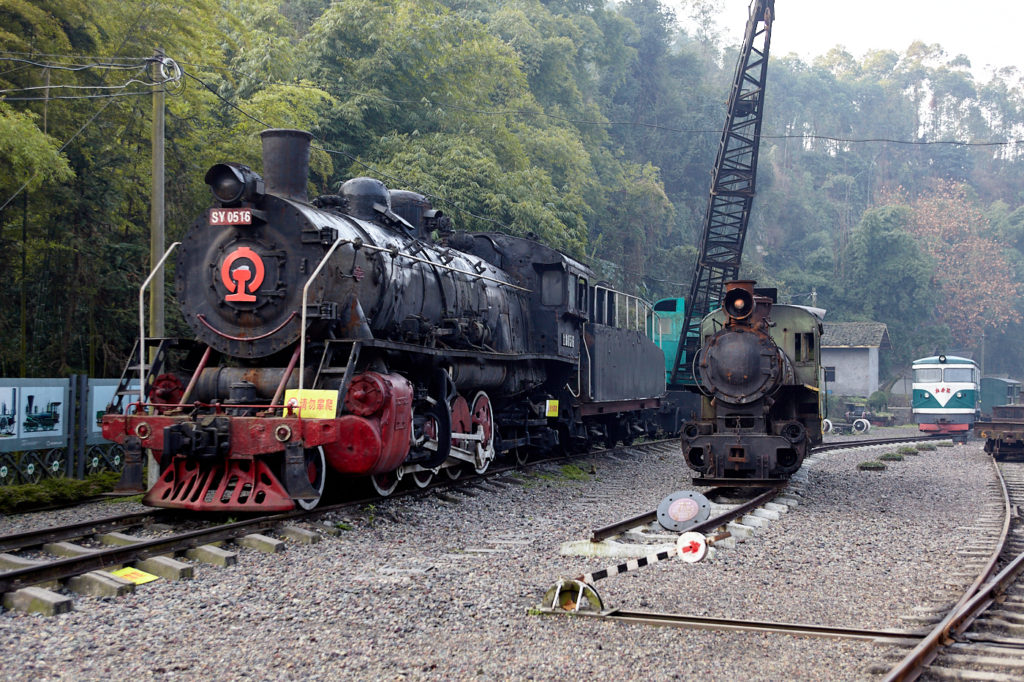
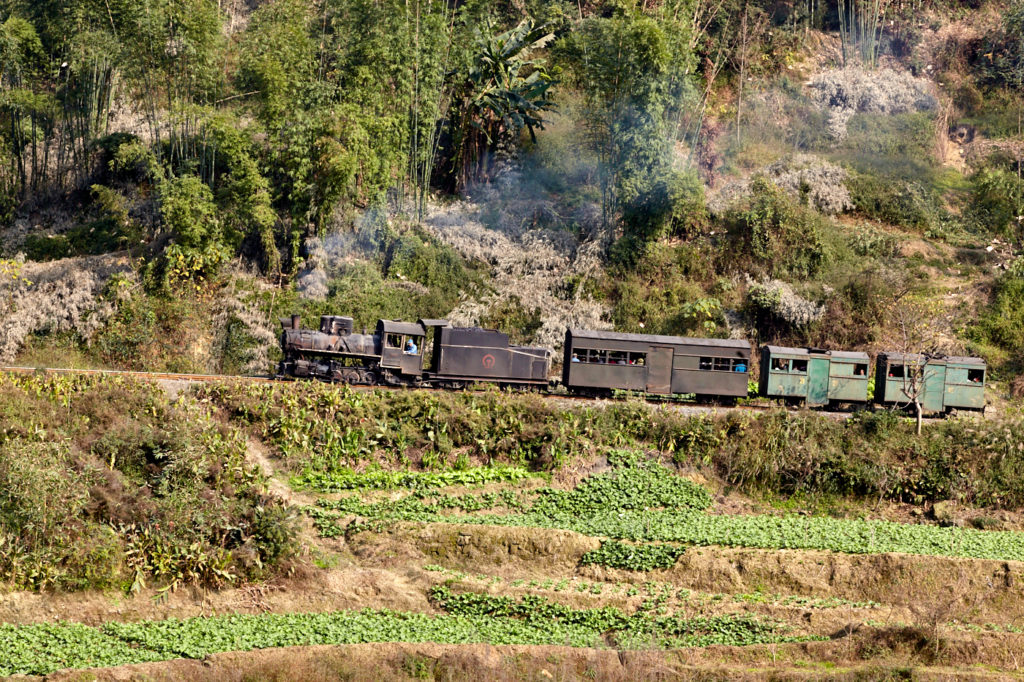
Old locomotives at the Mifengyan railway museum (left). Climbing the Caiziba loop (right).
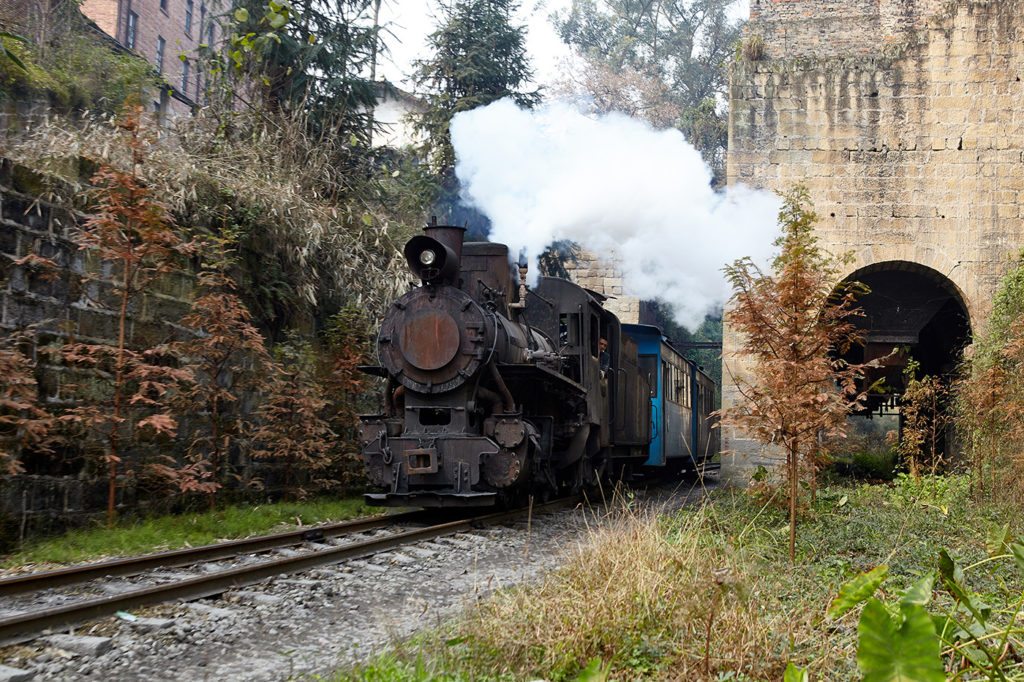
Passing the Pit Number 2 loading bay at Jiaoba.
At present Bagou seems like a significant tourist attraction waiting to be discovered. For the adventurous, it is a step back in time. But while it may be a protected area now, if it is to survive in the future it will somehow need to find a way forward. It has history, culture and a steam railway. It is also set in spectacular countryside that offers plenty of hiking opportunities, including a ten-kilometre trail through the pretty Xianren Canyon and Shuixing Village, and the entire length of the railway itself, as there is a motorcycle track along the side.
Read also: Steaming back in time: The North Borneo Railway
As yet there are only a few small guesthouses in Bagou, but there is no shortage of empty rooms: they just need a fair bit of restoration.
There are three scheduled train services a day that stop at all eight stations along the line. In summer and public holidays there are also tourist specials.
How to get there
The nearest international airport is Chengdu. Take a bus from Chengdu’s Shiyang bus station in the south of the city to Qianwei. Buses depart every hour and take 2-2.5 hours depending on traffic in Chengdu. From Qianwei bus station take a local bus to either Xishi or Yeujin. Xishi is the end of the railway line, while Yuejin is the official gateway to the park area. Note that Yuejin is the name of the town but the locals also know it as Samjing, which means Pit No 3. Scheduled trains depart from Xishi at 06.45, 12.45 and 16.45, and from Yuejin 15 minutes later.
Lots of information about the railway between 2000 and 2010 before the Chinese tourists discovered it on my website.
Three full length videos as well:
https://youtu.be/5InwvH0SgeI
https://youtu.be/edF20zGw9I0
https://youtu.be/-D-ayOHaOyg
It was a wonderful railway, I’m not sure I would say the same about today’s version although unlike most such operations in China, it has survived.
Hi Rob, Thanks for the comment. I saw your website and wonderful videos when I was researching my trip. I’d got the tip-off from two students from Chengdu who I’d met in Thailand. They were standing on the railway track waiting for the infamous train in the market. One of them was born in Qianwei.
There were no coal trains when I was there, just three scheduled passenger trains a day. There were usually a couple of other trains, presumably carrying officials for one reason or another, and a tourist special on the Saturday. It has clearly lost much of its authenticity as a working coal mine railway but if it is going to survive at all then tourism is probably the only way forward.
It was a sentiment echoed by the lady at Olean in Java, which I did discover via your website. They are actively trying to promote themselves as a heritage tourism site though they don’t have any budget for marketing. Still, if that is the only way they can survive and keep the steam engines running I wish them the very best of luck.
Wishing you the very best for the New Year as well. Lets hope we can get this pesky pandemic behind us and get on with our lives.
Cheers
David